Tu guía definitiva para reducir la vibración en el mecanizado
-
Las vibraciones producidas durante el mecanizado interrumpen las operaciones al provocar oscilaciones entre la herramienta de corte y la pieza de trabajo, lo que conlleva acabados superficiales deficientes, una menor vida útil de la herramienta y velocidades y avances más lentos.
-
Entre las causas comunes de vibración de las máquinas se incluyen inestabilidades de la máquina, configuraciones incorrectas del husillo o de las herramientas y una sujeción inadecuada de la pieza de trabajo.
-
Las tecnologías avanzadas, como los materiales amortiguadores de vibraciones y los sistemas de husillo de doble contacto BIG-PLUS, ayudan a mitigar los problemas de vibración.
Como todos los maquinistas saben, la vibración en el mecanizado es el enemigo jurado de las operaciones metalúrgicas de alta calidad y eficiencia. Los efectos de la vibración limitan las velocidades y avances, reducen la vida útil de las herramientas y afectan negativamente los acabados de las piezas. Sin embargo, solucionar problemas de vibración puede ser complicado, ya que sus causas son variadas y a menudo están interrelacionadas.
Vibración en Máquinas CNC 101: Conceptos Básicos
Los maquinistas experimentados comprenden los conceptos básicos de la vibración en máquinas CNC, pero para algunos, un repaso de vibración 101 puede ser útil. Antes de resolver problemas de vibración, debemos entender qué es y por qué es importante reducirla.
¿Qué es la Vibración en el Mecanizado?
La vibración en el mecanizado es un fenómeno mecánico que implica oscilaciones alrededor de un punto central. En procesos como fresado, torneado y taladrado, estas vibraciones se manifiestan como movimientos periódicos entre la herramienta de corte y la pieza, interrumpiendo la operación planeada. Las oscilaciones pueden ser resonantes, ocurriendo cuando el sistema vibra a su frecuencia natural, o no resonantes, típicamente causadas por factores como desgaste irregular de la herramienta o problemas mecánicos.
¿Cuáles son los Efectos de la Vibración en la Máquina?
Los efectos de la vibración en el mecanizado son significativos y multifacéticos. A nivel inmediato, la vibración degrada la calidad del acabado superficial, creando patrones ondulados o marcas regulares no deseadas en las piezas mecanizadas. En aplicaciones que requieren tolerancias estrictas y acabados espejados, esto puede generar el costoso problema de altas tasas de rechazo y retrasos en los plazos. Incluso en aplicaciones de menor precisión, la vibración puede afectar significativamente la rentabilidad del taller. Más adelante profundizaremos en esto.
Causas Más Comunes de la Vibración en la Máquina
Problemas de la Máquina
La propia máquina puede ser la causa de vibración, ya sea por inestabilidades en su construcción o durante el proceso de corte—por ejemplo, cambios de dirección rápidos o arranques y paradas bruscos. Afortunadamente, los fabricantes de máquinas están desarrollando tecnologías que ayudan a minimizar la vibración natural. Por ejemplo, muchas CNC modernas cuentan con sensores de vibración en tiempo real que trabajan con software de control adaptativo para monitorear y ajustar continuamente los parámetros de mecanizado y así reducir la vibración. El diseño físico de las máquinas también ha evolucionado, utilizando materiales con propiedades naturales de amortiguamiento de vibraciones y mejorando la rigidez estructural.
Husillo y Herramientas
Cualquier punto donde el metal toque el metal en tu configuración de mecanizado es una oportunidad para que ocurra vibración. Cuanto más seguro y rígido sea el contacto, menor será el riesgo. Nuestro sistema de husillo de doble contacto BIG-PLUS está diseñado pensando en esto. Muchos fabricantes dependen del contacto simultáneo de cono y brida para mejorar la rigidez y reducir vibraciones, pero no todos los sistemas de doble contacto son iguales. BIG-PLUS es EL ÚNICO verdadero sistema de doble contacto para husillos de cono 7:24.
Otro consejo importante para las herramientas es usar el mayor diámetro posible y la longitud mínima en tu montaje de herramientas para minimizar la vibración.
Pieza y Sujeción
Una colocación o sujeción inadecuada de la pieza puede amplificar significativamente los problemas de vibración durante el mecanizado. Cuando la sujeción es insuficiente o mal diseñada, se crea una base débil que permite que las fuerzas de corte naturales induzcan movimientos y oscilaciones no deseadas. Esto es especialmente crítico en piezas de paredes delgadas o con estructuras de soporte mínimas. Para mantener la estabilidad, la pieza debe estar apoyada lo más cerca posible de la mesa de la máquina, con las fuerzas de corte dirigidas hacia las áreas más rígidas tanto de la sujeción como de la estructura de la máquina. Soluciones modernas, como los sistemas de sujeción de fundición mineral, ofrecen un amortiguamiento superior comparado con materiales tradicionales.
Efectos de la Vibración en las Operaciones de Mecanizado
Como se mencionó, la vibración no solo afecta los acabados perfectos. También puede tener efectos perjudiciales incluso en aplicaciones que no requieren tolerancias ultra estrictas. Veamos algunas formas en que la vibración puede impactar tus operaciones.
Eficiencia en el Mecanizado
Altos niveles de vibración a menudo obligan a los operadores a reducir velocidades y avances, ralentizando las operaciones. En una industria donde el tiempo es dinero, esto puede representar un enorme costo de oportunidad.
Calidad de las Piezas y Desperdicio
En aplicaciones de alta precisión como aeroespacial, médica y automotriz, la vibración es especialmente riesgosa. Trabajando con materiales costosos y piezas grandes, una pieza desechada podría representar miles de dólares en pérdidas.
Desgaste y Rotura de Herramientas
La vibración afecta negativamente la vida útil de las herramientas, causando desgaste acelerado e impredecible en los filos de corte. De hecho, es un hecho comprobado: un estudio reveló que “las fuerzas de corte y las vibraciones generadas durante el mecanizado afectan negativamente la vida útil de la herramienta, la pieza, la calidad y el costo. Principalmente acelera el desgaste de la herramienta, disminuyendo la calidad superficial y la vida útil funcional de la herramienta de corte.” En casos extremos, la vibración puede causar la rotura de la herramienta, poniendo en riesgo la pieza, la máquina y el operador.
Estado de la Máquina
Más allá de las herramientas, la vibración del mecanizado representa riesgos para tus máquinas: como mínimo, estresa los componentes y provoca desgaste prematuro; en el peor de los casos, puede causar tiempo de inactividad o fallas catastróficas. La naturaleza impredecible del desgaste inducido por vibración también dificulta implementar programas de mantenimiento predictivo confiables, complicando la planificación de la producción y la gestión de costos.
Técnicas para Reducir y Prevenir la Vibración en el Mecanizado
Como se mencionó, el diseño de la máquina y la configuración de la pieza pueden optimizarse para minimizar la vibración. Pero los elementos más controlables están relacionados con las herramientas y técnicas de corte.
Usar Tecnología de Amortiguamiento de Vibraciones
Para ensamblajes de herramientas largos o aplicaciones de corte complejas propensas a vibración, los operadores pueden necesitar ayuda adicional. Ahí entran los componentes modulares de amortiguamiento de vibraciones. Los productos BIG DAISHOWA Smart Damper, por ejemplo, están diseñados para taladrado de desbaste y acabado o fresado que requieren protección adicional contra vibración.
Con Smart Damper, un mecanismo de amortiguamiento reforzado se integra en el portaherramientas y funciona como contrapeso dinámico y amortiguador de fricción. Absorbe instantáneamente la vibración y elimina el chatter, ayudando a lograr mayor precisión de mecanizado, mejores acabados y mayores tasas de remoción de metal para mayor productividad en profundidades críticas. Además, permite el suministro de refrigerante a través del cuerpo directamente al filo de corte.
Las soluciones de sujeción con amortiguamiento de vibraciones son otra opción. BIG DAISHOWA ofrece una variedad de soluciones de sujeción diseñadas para máxima estabilidad y flexibilidad. Por ejemplo, nuestros productos de sujeción multi-eje son ideales para mecanizado 5 ejes con transferencia de múltiples piezas, ya que ubican y estabilizan las piezas sin obstruir el acceso a la parte superior y los laterales. Además, permiten girar fácilmente la pieza sujeta para acelerar las operaciones.
Prestar Atención a los Ensambles de Herramientas
A veces se requieren ensamblajes de herramientas más largos para piezas complejas o grandes. Pero, como se mencionó, cuanto mayor es la relación longitud-diámetro, mayor es el riesgo de vibración. Aquí conviene usar herramientas modulares de la más alta calidad. Nuestro sistema modular BIG DAISHOWA está diseñado con estándares precisos para garantizar máxima rigidez, sujeción y vida útil de la herramienta. Además de la flexibilidad y el diseño de calidad, nuestro sistema modular cuenta con soporte de expertos en aplicaciones, ofreciendo asesoramiento para mejorar la productividad y reducir riesgos de vibración inherentes a ensamblajes largos.
Mejorar la Rigidez con Husillo y Portaherramientas
Como se mencionó, los sistemas de husillo y portaherramientas de doble contacto son clave para reducir vibración y mejorar la precisión. Aunque muchos fabricantes afirman ofrecer doble contacto, BIG DAISHOWA es el único verdadero sistema de doble contacto licenciado para husillos BIG-PLUS. Otros simplemente no tienen los calibres ni dimensiones para reproducir un verdadero contacto doble entre portaherramientas y husillo.
Elegir la Técnica y Programación Correctas
Para operaciones propensas a vibración, existe un punto óptimo para avances, velocidades y profundidad de corte. También hay técnicas de programación específicas para reducir vibración. Por ejemplo, el fresado trocoidal es bueno para operaciones de fresado, ya que reduce arranques, paradas y cambios de dirección bruscos que causan vibración. Otros trucos de programación incluyen:
- Software CAM para mantener un grosor de viruta constante, ayudando a reducir vibración
- Interpolación circular con herramienta más pequeña en las esquinas para mantener la frecuencia natural de la máquina
La última tecnología en máquinas y herramientas puede contribuir enormemente a un mecanizado libre de vibraciones. Habla con un experto de BIG DAISHOWA hoy mismo para obtener herramientas específicas que reduzcan la vibración, mejoren la productividad y aumenten tu rentabilidad.
¿Te pareció interesante o útil? Haznos saber tu opinión agregando tus comentarios o preguntas a continuación.









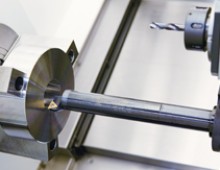
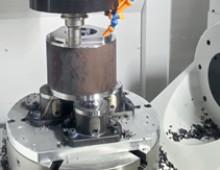
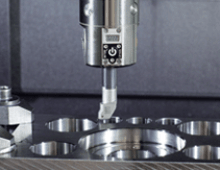
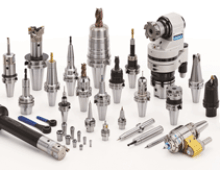
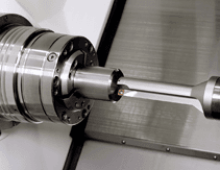
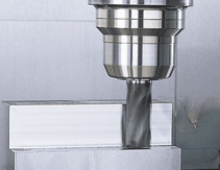
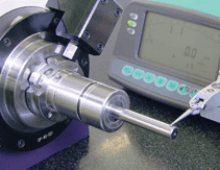
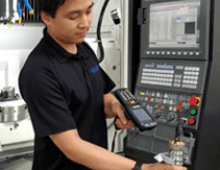
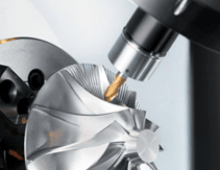
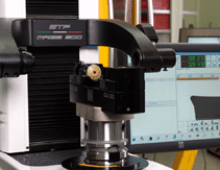
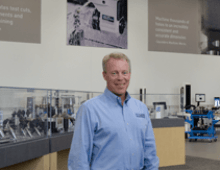
Añadir nuevo comentario